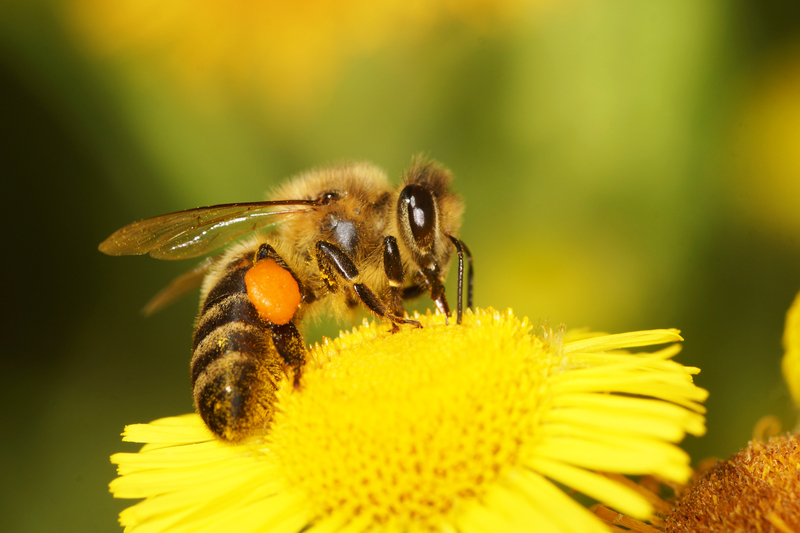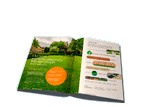Creating a Lovely Portable Garden in a Rental
Posted on 01/11/2024
Living in a rental property presents unique challenges and opportunities, especially when it comes to personalizing your space without making permanent changes. For gardening enthusiasts, this often translates into creatively establishing a portable garden. Whether you have a spacious balcony, a compact patio, or just some window sills, you can create a thriving portable garden that moves with you when it's time to relocate.
The Beauty of Portable Gardens
Portable gardens offer unparalleled flexibility. Unlike traditional gardens that require elaborate planning and permanent installations, portable gardens can be adapted and modified as needed. They are particularly useful for renters who want to enjoy the perks of gardening without jeopardizing their security deposit or breaching the terms of their lease agreement.

Assess Your Space
Before diving into the exciting process of setting up your portable garden, it's crucial to assess your available space. Here are a few considerations:
- Size and Layout: Measure the dimensions of your patio, balcony, or windowsills. Determine how much space you realistically have for containers, pots, and other garden elements.
- Light Exposure: Observe how much sunlight your space receives throughout the day. Identify which areas are sunny, partially shaded, or fully shaded, as different plants have varying light requirements.
- Accessibility: Ensure that your garden is easily accessible for watering, pruning, and other maintenance tasks. Avoid cluttering walkways or creating obstacles in your living space.
Selecting the Right Containers
Containers are a fundamental aspect of portable gardens. They come in a variety of shapes, sizes, and materials, each with its advantages:
- Plastic Pots: Lightweight and affordable, plastic pots are easy to move and come in a plethora of colors and styles.
- Ceramic Pots: These pots can enhance the aesthetics of your garden but are generally heavier and less portable.
- Fabric Pots: Known for promoting excellent root aeration, fabric pots are lightweight and collapsible, making them perfect for portable gardens.
- Self-Watering Containers: These containers are ideal for busy gardeners or those who travel frequently, as they reduce the frequency of watering.
Choosing Suitable Plants
When it comes to selecting plants for a portable garden, the possibilities are virtually endless. However, it's essential to choose plants that align with your space, climate, and maintenance capabilities:
- Herbs: Basil, mint, rosemary, and thyme are excellent choices for a portable herb garden. They require minimal space and can often thrive in smaller containers.
- Vegetables: Consider compact varieties such as cherry tomatoes, lettuce, and bell peppers. Vertical gardening techniques can also be employed to maximize space.
- Flowers: Brighten your space with colorful annuals like petunias, marigolds, and zinnias. For perennials, consider using pots that can be easily transported.
- Succulents and Cacti: These low-maintenance plants are perfect for gardeners with limited time or experience. They thrive in a variety of containers and require minimal watering.
Soil and Fertilization
The foundation of any successful garden is high-quality soil. Portable gardens often benefit from using a well-draining potting mix, which helps prevent waterlogged roots and promotes healthy plant growth. Additionally, regular fertilization is crucial:
- Organic Fertilizers: Composted manure, bone meal, and fish emulsion are excellent organic options for enriching your soil.
- Slow-Release Fertilizers: These provide a steady supply of nutrients over time, reducing the need for frequent applications.
- Liquid Fertilizers: Ideal for container gardening, liquid fertilizers can be easily applied during routine watering.
Watering Practices
Consistent and adequate watering is essential for maintaining a vibrant portable garden. However, the needs vary depending on the type of plants and the containers used:
- Check Soil Moisture: Regularly check the moisture levels in your pots using a moisture meter or by simply feeling the soil. Generally, the top inch of soil should be dry before re-watering.
- Watering Schedules: Establish a watering schedule tailored to your plants' needs. Early morning or late evening watering reduces water loss due to evaporation.
- Drip Irrigation: For those with more extensive portable gardens, drip irrigation systems can provide efficient and consistent watering.
Mobility and Portability
One of the primary advantages of a portable garden is its mobility. Here are some tips to enhance the portability of your garden:
- Wheeled Plant Caddies: Use wheeled plant caddies or trays to easily move heavier pots and containers.
- Lightweight Materials: Opt for lightweight containers like plastic and fabric rather than heavier ceramic or terracotta pots.
- Compact Arrangements: Group smaller pots together on shelves or stands, making it easier to relocate as needed.
Decorative Elements
In addition to functional elements, consider incorporating decorative touches to enhance the aesthetic appeal of your portable garden:
- Planter Stands: Elevate your pots using decorative planter stands to create visual interest and maximize space.
- Outdoor Rugs: Add an outdoor rug to define your garden area and create a cozy atmosphere.
- Lighting: String lights, solar lanterns, or LED planters can add a charming glow to your garden during the evening hours.

Maintenance and Care
Maintaining your portable garden involves regular care to ensure your plants thrive:
- Pruning and Deadheading: Regularly prune your plants to encourage healthy growth and deadhead flowers to promote blooming.
- Pest Management: Monitor your plants for signs of pests and use natural pest control methods such as neem oil or insecticidal soap.
- Seasonal Adjustments: Adjust your plant selections and care routines according to seasonal changes and the growth cycles of your plants.
Conclusion
Creating a lovely portable garden in a rental property is a rewarding and achievable endeavor. By assessing your space, selecting appropriate containers and plants, and paying attention to soil, water, and mobility, you can establish a thriving garden that enhances your living environment. With a bit of creativity and care, your portable garden can become a beautiful oasis, providing you with joy and relaxation, no matter where you live.






 Certified and experienced landscapers
Certified and experienced landscapers



 Get a Quote
Get a Quote